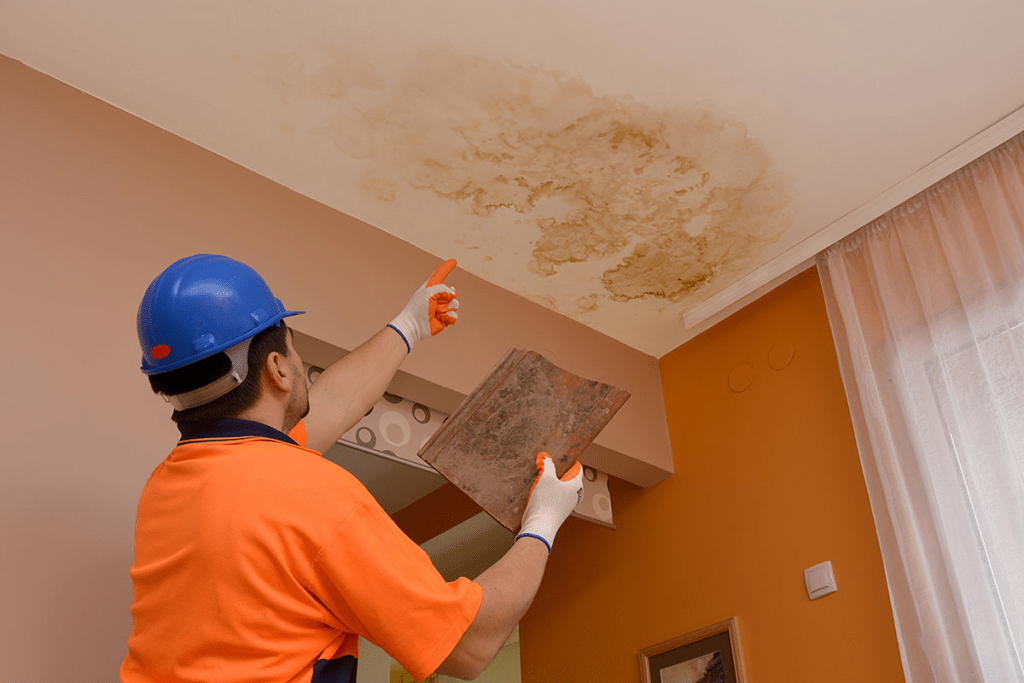Purchasing a home is an exciting milestone, but discovering a roof leak shortly afterward can be frustrating and stressful. If you’re thinking, “I bought a house and now the roof is leaking,” don’t worry—you’re not alone, and there are steps you can take to address the issue effectively.

This article will guide you through understanding why roof leaks occur, your options as a new homeowner, and practical steps to remedy the situation while minimizing damage and costs.
Why Roof Leaks Happen After Buying a House
Discovering a leak after moving into a new home can feel overwhelming. But understanding the causes of the problem is the first step toward resolving it.
- Undisclosed Damage
- Some sellers may not disclose known issues with the roof, either intentionally or due to lack of awareness.
- Pre-purchase home inspections might miss minor or hidden roof issues.
- Weather Conditions
- Heavy rain, snow, or strong winds can expose weak spots in the roof that went unnoticed during dry periods.
- Aging Roof Materials
- Roofing materials like shingles, tiles, or underlayment naturally deteriorate over time, leading to vulnerabilities.
- Improper Installation
- Poor installation by the previous owners can result in leaks, especially around vents, chimneys, or flashing.
Read too: Is It Reasonable to Ask the Seller to Replace the Roof?
I Bought A House And Now The Roof Is Leaking: What To Do Next
Step 1: Assess the Damage
The first step is to determine the severity of the leak and identify the affected areas.
- Inspect visible signs: Look for water stains, drips, or discoloration on ceilings and walls.
- Check the attic: Use a flashlight to inspect the underside of the roof for leaks or wet insulation.
- Monitor during rain: If possible, observe the leak during rainfall to pinpoint its source.
Step 2: Prevent Further Damage
To avoid worsening the problem, take immediate measures to control the situation.
- Place containers under the leak: Use buckets or pans to catch dripping water and prevent floor damage.
- Protect furniture and belongings: Move items away from the affected area or cover them with plastic sheets.
- Tarp the roof: If the leak is severe, consider placing a temporary tarp over the roof to prevent more water from entering.
Step 3: Document the Issue
Keep detailed records of the damage and repair efforts. This documentation can be essential if you need to pursue legal or insurance claims.
- Take photos and videos: Capture images of the leak, water damage, and any affected belongings.
- Save repair receipts: Keep receipts for temporary fixes and professional inspections.
Step 4: Contact the Seller or Real Estate Agent
If the issue stems from undisclosed damage, you may have recourse against the seller.
- Review the purchase agreement: Check for clauses about disclosure requirements or warranties related to the roof.
- Reach out to the seller: Politely notify them about the issue and ask if they were aware of it before the sale.
- Consult your real estate agent: They may mediate communication with the seller or advise you on your options.
Step 5: Check Your Home Warranty or Insurance
Depending on your coverage, you may be able to offset the repair costs.
- Home warranty: If you purchased a home warranty during the sale, review the policy for roof coverage.
- Homeowner’s insurance: Contact your insurer to determine if the damage is covered. Keep in mind that pre-existing issues may not qualify.
Repairing a Leaking Roof
Temporary Fixes
If you can’t immediately hire a professional, use these quick solutions to minimize damage:
- Apply roofing tape: Seal minor leaks temporarily using waterproof roofing tape.
- Patch with roofing sealant: For small cracks or holes, apply roofing sealant to create a temporary barrier.
Hiring a Roofing Professional
For permanent repairs, it’s best to enlist the help of a licensed roofing contractor.
- Get multiple quotes: Request estimates from several contractors to compare pricing and services.
- Verify credentials: Ensure the contractor is licensed, insured, and experienced in roof repairs.
- Ask about warranties: Reputable contractors often provide warranties for their work.
Preventing Future Roof Issues
After addressing the current leak, take steps to prevent future problems.
- Schedule regular inspections: Have your roof professionally inspected every 1–2 years to catch issues early.
- Maintain the gutters: Clean gutters regularly to prevent water buildup that can damage the roof.
- Trim overhanging branches: Keep tree limbs away from the roof to minimize debris accumulation and reduce the risk of impact damage.
- Replace aging materials: Invest in new shingles, flashing, or underlayment as needed to extend your roof’s lifespan.
Legal Considerations
In some cases, you may need to pursue legal action to resolve the issue.
Home Disclosure Laws
Most states require sellers to disclose known defects, including roof problems. If the seller failed to disclose a known leak, they could be held liable.
- Consult an attorney: A real estate lawyer can help you understand your rights and build a case if necessary.
- Consider mediation: In some situations, mediation or arbitration can resolve disputes without going to court.
I Bought A House And Now The Roof Is Leaking: Is It Common?
Yes, discovering roof leaks shortly after purchasing a home is more common than you might think. Factors such as weather changes, overlooked inspections, and aging materials contribute to this issue. By addressing the problem promptly and seeking the right support, you can protect your investment and restore peace of mind.
Conclusion
If you’ve been saying, “I bought a house and now the roof is leaking,” take a deep breath—you’re not alone, and there are clear steps to handle the situation. From assessing the damage and contacting the seller to hiring professionals for repairs, each action brings you closer to resolving the issue.
While a leaking roof may seem daunting, it’s an opportunity to improve your home’s resilience and ensure a safe, comfortable living environment for years to come.



Leave a Reply